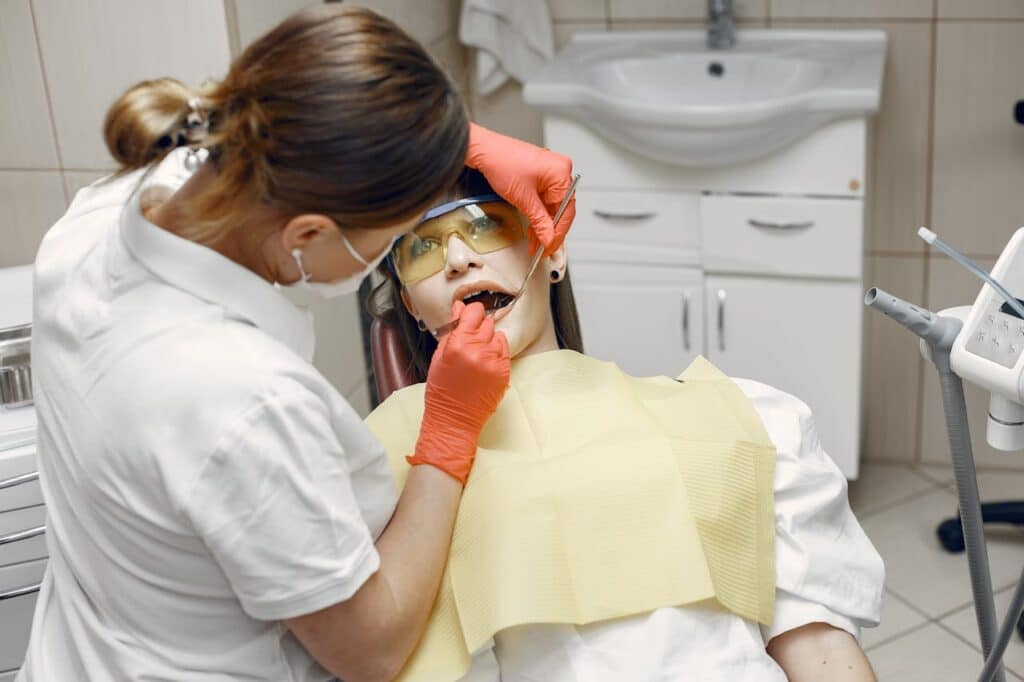Going to the dentist makes many people anxious, especially when thinking about pain or discomfort. This fear can lead some to avoid necessary dental care, which might cause long-term oral health problems. Luckily, sedation dentistry can help ease these worries and create a more comfortable dental experience.
Sedation dentistry uses medication to help patients relax during dental procedures. It can range from mild sedation, where you’re awake but relaxed, to deep sedation, where you are close to sleeping. This approach makes visits less scary and more pleasant, allowing dentists to perform needed treatments while the patient feels at ease. Whether you fear the drill’s sound or the dentist’s chair, sedation dentistry might be the solution you’ve been looking for. It can turn a potentially stressful situation into a simple and manageable appointment, ensuring you get the care your teeth need.
Understanding Sedation Dentistry
Sedation dentistry is a method used to help patients feel calm and relaxed during dental procedures. It involves administering medication to ease anxiety, making it easier for individuals to receive necessary dental care without stress. This approach is especially helpful for those who experience fear when visiting the dentist or have difficulty sitting still for treatments.
Several types of sedation are commonly used in dentistry:
– Nitrous Oxide (Laughing Gas): This is the mildest form of sedation. It is inhaled through a mask, helping patients feel relaxed but remain fully conscious. The effects wear off quickly, allowing you to drive yourself home after the appointment.
– Oral Sedation: This involves taking a pill before the procedure. The medication makes you drowsy, but you stay awake. The level of sedation varies depending on the dose, and it can be mild or moderate.
– IV Sedation: Administered through a vein, this form offers a deeper sedation level. You remain awake but often feel as though you slept through the procedure. Your dentist carefully monitors this method for safety.
– General Anaesthesia: Used for more complex procedures, it puts you into a deep sleep, where you feel no pain and have no memory of the treatment.
Each type of sedation has its benefits and applications. Discussing your fears and concerns with a professional can help determine the best option for your needs, making dental visits less daunting.
Benefits of Sedation Dentistry
One of the primary advantages of sedation dentistry is its ability to significantly reduce anxiety and fear associated with dental visits. Many people avoid the dentist due to past experiences or phobias. Sedation helps overcome these fears, allowing you to receive essential dental care without distress.
Here are some key benefits of sedation dentistry:
– Minimizes Pain Perception: Even the thought of dental tools can cause discomfort for some people. Sedation helps reduce this perception, making treatments more bearable.
– Reduces Gag Reflex: For those with a sensitive gag reflex, sedation can make dental procedures smoother and more comfortable.
– Helps Manage Restlessness: Patients who find it hard to sit still benefit from sedation, as it helps them relax throughout the procedure.
– Allows More Complex Procedures: Sedation enables dentists to perform more work in one visit, often completing multiple treatments that would otherwise require several appointments.
Sedation dentistry can enhance the overall dental experience by making appointments more comfortable. It removes barriers to treatment, ensuring that anxiety doesn’t interfere with maintaining good oral health. By opting for sedation, patients can focus on the benefits of their dental care, like healthier teeth and a brighter smile, rather than the steps needed to achieve it.
How Sedation Dentistry Works
Understanding the process of sedation dentistry can ease your mind about how it helps during dental visits. This approach involves several steps to ensure you feel comfortable throughout your treatment. Each patient’s experience varies slightly based on their needs and the type of sedation used.
The process typically follows these steps:
– Consultation: The dentist assesses your medical history and dental needs to determine the best sedation type. They discuss any concerns you might have and explain how the sedation will work for your specific treatment.
– Administration: Depending on the sedation chosen, the dentist administers it through gas, oral medication, or an IV. They ensure you’re comfortable before starting the procedure.
– Monitoring: Throughout the treatment, the dental team closely monitors your vital signs and comfort level. This professional oversight ensures your safety and the effectiveness of the sedation.
– Post-Procedure: Once the treatment is complete, you rest until the sedation’s effects wear off. You may need someone to drive you home, especially if you’ve had deeper sedation levels.
Safety measures are vital in sedation dentistry. Dentists are trained to handle sedation and maintain equipment to ensure patient safety. This commitment to safety and professional oversight helps make sedation a reliable option for easing dental anxiety.
Who Can Benefit from Sedation Dentistry?
Sedation dentistry is ideal for various patients, particularly those with specific needs or conditions that make traditional dental visits challenging. It offers solutions for individuals who struggle with dental phobias, sensitive gag reflexes, or difficulties sitting still due to physical or cognitive conditions.
Here are some patients who may benefit from sedation:
– Anxious Patients: Those who experience severe anxiety or fear during dental visits can find relief through sedation, making it easier to undergo necessary treatments.
– Children and Special Needs Patients: Kids and individuals with special needs who find it hard to cooperate during procedures may also benefit from sedation, ensuring they receive essential dental care without distress.
– Patients with Low Pain Thresholds: For those who are particularly sensitive to pain, sedation provides a way to minimize discomfort and enhance their overall experience.
Considerations for choosing sedation options include your medical history, the procedure type, and personal comfort levels. A detailed discussion with your dentist can help tailor the sedation approach to meet your unique needs, ensuring safe and effective treatment.
Conclusion
Sedation dentistry has revolutionized the way patients approach dental care, providing a calm and stress-free experience. It’s a vital tool for anyone whose anxiety or other factors prevent them from receiving the necessary dental work. By reducing discomfort and fear, sedation dentistry helps maintain oral health and encourages regular dental visits, promoting a lifelong habit of self-care.
Pickering Dental Services is dedicated to providing a comfortable and pleasant dental experience. If you’ve been putting off dental care due to anxiety or other concerns, consider full sedation dentistry as a way to improve your dental visits. Our experienced team can help guide you through the process, ensuring that your time in the dental chair is as relaxing as possible.



